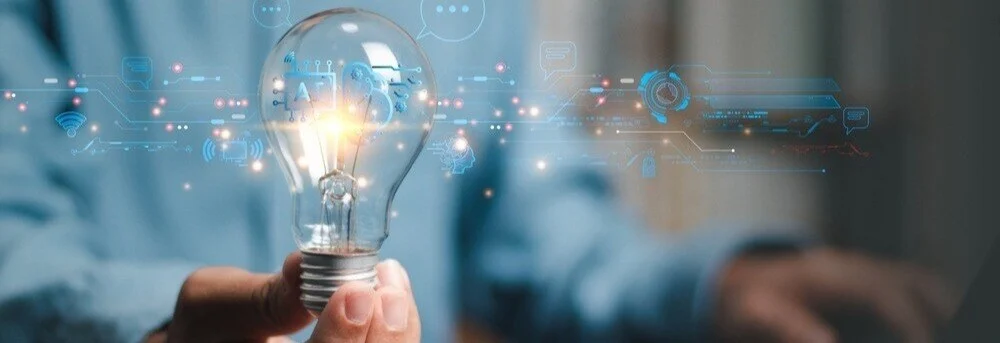Navigating AI Patent Eligibility: Insights from the USPTO’s 2024 Subject Matter Eligibility Guidance Update
Legal Alerts
7.23.24

The United States Patent and Trademark Office (USPTO) recently released their much-anticipated guidance on subject matter eligibility under 35 U.S.C. § 101 for AI inventions. The guidance aims to assist USPTO personnel and stakeholders in evaluating the subject matter eligibility of claims in patent applications and patents involving inventions related to AI technology (AI inventions). This update introduces a new set of examples intended to assist in applying the USPTO’s subject matter eligibility guidance to AI inventions during patent examination, appeal, and post-grant proceedings. Specifically, it explains the two-step inquiry process of Step 2A, which focuses on determining whether a claim recites a judicial exception and if it integrates that exception into a practical application.
The guidance underscores the USPTO’s commitment to addressing AI in patent law and reflects proactive engagement with practitioner feedback. The guidance reinforces a fundamental principle: just as applying a computer to an abstract idea doesn’t make it patentable, merely incorporating AI, large language models (LLMs), or neural networks into an abstract idea cannot transform it into a patentable application. However, the guidance isn’t groundbreaking and opens further questions about the necessary level of technical detail for AI patentability. These questions prompt considerations of whether trade secrets might provide a more effective protection strategy for inventions that may not satisfy the technical requirements for patentability.
Notably, the guidance states that the use of AI in developing an invention does not influence its patent eligibility under § 101, focusing instead on the invention itself and its merit for patent protection. Additionally, while the guidance clarifies and assists, it does not constitute substantive rulemaking and lacks the force of law. This lack of authority implies that examiners may interpret the guidance differently, limiting patent practitioners’ ability to appeal their subject matter rejections based on this guidance.
Under § 101, patents are granted for processes, machines, manufactures, and compositions of matter, but not for abstract ideas, laws of nature, or natural phenomena. The guidance tackles the issue of evaluating whether a claim recites an abstract idea in Step 2A, Prong One, and considers improvements in Step 2A, Prong Two. It distinguishes between claims that recite an abstract idea as an essential element and those that involve an abstract idea without it being part of the claim language. A claim reciting an abstract idea directly includes the abstract idea as an essential element of the claim itself. On the other hand, a claim involving an abstract idea implies that the claim is based on or utilizes an abstract idea but does not explicitly recite the abstract idea as part of the claim language. This distinction is crucial because claims that merely involve an abstract idea can still be eligible for patent protection if they integrate it into a practical application.
Moreover, the guidance provided examples of claims that did not recite abstract ideas. For instance, it cites a claim for an application-specific integrated circuit (ASIC) designed for a neural network, which showcases a practical application beyond mere mathematical concepts, and a system for monitoring health and activity in dairy livestock, illustrating practical application in livestock management. These examples highlight how specific implementations that demonstrate practical utility in AI fields can meet the criteria for patent eligibility. However, they do not address the level of technical detail needed.
The guidance also includes new examples (47-49) that illustrate how eligibility analysis is applied to AI-related claims, emphasizing the distinction between abstract ideas and their practical applications. Example 47 features an artificial neural network for anomaly detection, Example 48 employs AI methods to analyze and separate speech signals, and Example 49 utilizes an AI model to personalize medical treatment based on individual patient data. In eligibility assessments, claims that incorporated abstract ideas into practical applications with technological improvements, like enhancing network security or advancing speech-separation technology, were deemed eligible. Conversely, claims that merely presented abstract ideas without tangible applications or enhancements were found ineligible.
Key Takeaways:
- The USPTO’s guidance emphasizes that AI’s role in creating an invention doesn’t influence its patent eligibility, focusing instead on whether the invention qualifies as a patentable innovation under 35 U.S.C. 101.
- The guidance clarifies that claims involving abstract ideas can be patentable if they incorporate the idea into a practical application, using detailed examples from various AI applications, like anomaly detection and medical treatment personalization, to illustrate how to navigate patent eligibility.
- The guidance does not address significant issues about the patentability of certain AI-related inventions, such as the necessary level of detail regarding AI system training or operation to render claims patentable, despite commenting on the lack of such details in ineligible examples.
- While the guidance is not legally binding, it aims to provide clarity and consistency in the patenting process, continuing the USPTO’s efforts to adapt patent laws to AI advancements. However, it also highlights limitations due to the lack of Federal Circuit precedent on many AI-related issues.
- The questions that the guidance opens up suggest practitioners might instead consider using trade secrets to protect AI innovations, especially those that do not clearly meet patent eligibility criteria.
- The USPTO is expected to release future guidance on AI’s relationship with non-obviousness, the scope of prior art, and the qualifications for a person of ordinary skill in the art, indicating ongoing efforts to refine the framework for AI-related patents.
If you have any questions about the information in this alert, please contact Mike Word, Diego Freire, or your relationship attorney.



